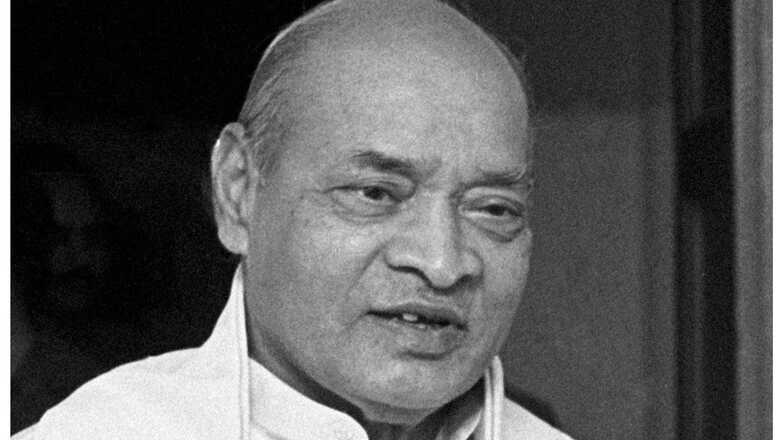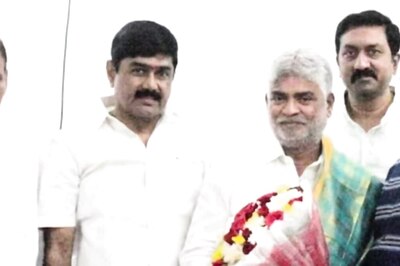
views
Former Prime Minister PV Narasimha Rao, in a true sense of the word, was a Batman of Indian politics. He became Prime Minister at a time when India’s chips were badly down. In 1991, the country had to pledge its gold to pull the economy from the brink. He reoriented India’s pro-Soviet Union foreign policy to bring it closer to the Western order. He reached out to Israel without leaving the Palestinian cause — an axis on which the Indian foreign policy still revolves around. And all this he delivered with a minority government.
Still, Narasimha Rao remains largely forgotten and uncredited — Batman-like.
Sanjaya Baru, in his book 1991: How PV Narasimha Rao Made History, emphasised at this phenomenon, with a tinge of sadness, when he recalled how “at an interaction with students at a university near Delhi, in the winter of 2015”, he asked the audience “what the year 1991 meant to them”. One student readily stood up to say he was born that year — and the entire audience burst into laughter. When Baru insisted on thinking more, there was silence.
Later, the same year, Baru addressed “a meeting of the Hyderabad Management Association” and he repeated the same question. Many were quick to reply this time: The government that year had “introduced new economic policies that opened up the Indian economy”, Baru was told. And who was responsible for this? “Manmohan Singh,” pat came the reply! Some even credited P Chidambaram and Kamal Nath!
Later, in an interaction with this author, Baru expressed his surprise at the height of Indian ignorance: “No one mentioned PV Narasimha Rao. Ironically, this incident took place in Hyderabad, which was Rao’s own city.”
When I asked Baru why Rao had been forgotten, he cited two reasons. “One, he faced several corruption cases, especially towards the fag end of his rule. But most importantly, the Congress decided to erase the memory of Narasimha Rao, to make the point that no person from outside the family can ever be a successful PM. After all, what did Rao prove? He proved that someone doesn’t need to be related to the Nehru-Gandhi family to be a successful prime minister. By becoming the first PM outside the family to run the country for a full term, he effectively challenged this notion.”
It’s ironic to see the Congress disowning one of its own prime ministers, especially the one “whose impact on the nation’s fortune went way beyond the economy”, as Baru wrote in 1991. But then it was an obvious outcome for a non-Gandhi leader in the Congress. It had happened in the past with Sardar Vallabhbhai Patel and it took place after Narasimha Rao, as was the case with Pranab Mukherjee. Anyone seen to be eclipsing the halo of the Gandhi-Nehru family was systematically targeted to be pushed to the footnotes of the party’s — and by extension, the nation’s — history.
This explains Sonia Gandhi’s hostility toward Rao, to the extent that the former Prime Minister was denied a well-deserved memorial in Delhi, even when lesser worthies could find space in the national capital. Author Vinay Sitapati, in Half Lion: How PV Narasimha Rao Transformed India, gives a graphic detail on how the late Prime Minister was denied a rightful place and space in Delhi after his death.
“The home minister, Shivraj Patil, suggested to Rao’s youngest son, Prabhakara, that ‘the body should be cremated in Hyderabad’. But the family preferred Delhi. After all, Rao had last been chief minister of Andhra Pradesh more than thirty years ago, and had since worked as Congress general secretary, Union minister, and finally prime minister — all in Delhi. On hearing this, the usually decorous Shivraj Patil snapped, ‘No one will come’,” Sitapati writes.
Thereafter, Ghulam Nabi Azad and YS Rajasekhara Reddy reached out to Rao’s family — Reddy, being the chief minister of Andhra Pradesh, promised a grand memorial for Rao in Hyderabad!
Later in the day, Prime Minister Manmohan Singh entered the room and asked Prabhakara: “What do you want to do with the body?” To this, Rao’s son replied, “These people say it should be in Hyderabad… This (Delhi) is his karmabhoomi. You should convince your Cabinet colleagues.” Manmohan nodded. Sonia Gandhi was standing near, but mostly kept quiet.
When Sanjaya Baru arrived, Ahmed Patel sought his intervention. Baru’s bureaucrat father knew Rao from the 1960s — and he was close to the family. “Sonia’s political secretary tapped him on the shoulder. ‘You know the family,’ Patel said. ‘The body should be taken to Hyderabad. Can you convince them?’”
Sitapati quotes Prabhakara as saying, “We sensed even then that Sonia-ji did not want Father’s funeral in Delhi. She did not want a memorial (in Delhi)… She did not want him (to be seen) as an all-India leader.”
The next morning, when Rao’s body, draped in the national flag, was being taken to the airport, it was planned to stop at 24 Akbar Road, the Congress headquarters. “As the body approached 24 Akbar Road, located adjacent to Sonia Gandhi’s residence, the funeral procession slowed. The entrance gate to the compound looked firmly shut. There were several senior Congressmen present, but hardly any cadres had been rustled up. No slogans filled the air, just deathly silence. The carriage stopped on the pavement outside, as Sonia Gandhi and others came out to pay their respects.”
“It was customary for the bodies of past Congress presidents to be taken inside the party headquarters so that ordinary workers could pay their respects. The family was somewhat dazed when this did not happen. A friend of Rao’s asked a senior Congresswoman to let the body in. ‘The gate does not open,’ she replied. ‘This was untrue,’ the friend remembers. ‘When Madhavrao Scindia died (some years earlier) the gate was opened for him.’ Manmohan Singh now lives in a guarded bungalow a few minutes from Akbar Road. When asked why Rao’s body wasn’t allowed into the Congress headquarters, he replies that he was present, but has no knowledge of this. Another Congressman is more forthcoming. ‘We were expecting the gate to be opened… but no order came. Only one person could give that order.’ He adds, ‘She did not give it.’”
However, to singularly blame Sonia Gandhi would be unfair. She has been only pursuing the family-first policy that she inherited. The virus of dynasticism has badly tampered with the democratic values of the Congress, turning into a private company where the Nehru-Gandhis would alone rule and only their relatives, friends and acquaintances would assist and advise in matters of governance. How could she have forgiven Narasimha Rao, who had threatened the very existence of the family in Indian politics?
In this backdrop, the Narendra Modi government should be congratulated for awarding Bharat Ratna to Narasimha Rao, who, as former diplomat Rajiv Dogra writes in India’s World: How Prime Ministers Shaped Foreign Policy, “transformed” this country. “If Jawaharlal Nehru ‘discovered’ India, and if Indira Gandhi made it ‘proud’, Narasimha Rao ‘transformed’ it,” Dogra writes matter-of-factly.
By acknowledging the contribution of this “Ratna” of Bharat, the Modi dispensation has corrected a historical injustice deliberately orchestrated on those not having the Gandhi-Nehru surnames. As I write in my just-published book, Bharat Rising: Dharma, Democracy, Diplomacy, “New India needs more pantheons than just Gandhi and Nehrus.” Bharat Ratna to Narasimha Rao is a step in that direction.
Views expressed in the above piece are personal and solely that of the author. They do not necessarily reflect News18’s views.


















Comments
0 comment